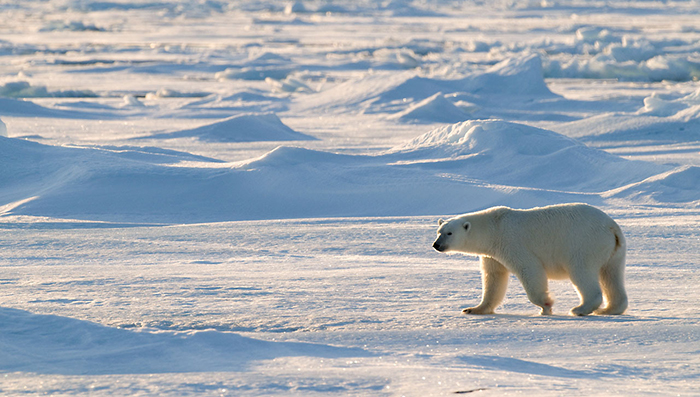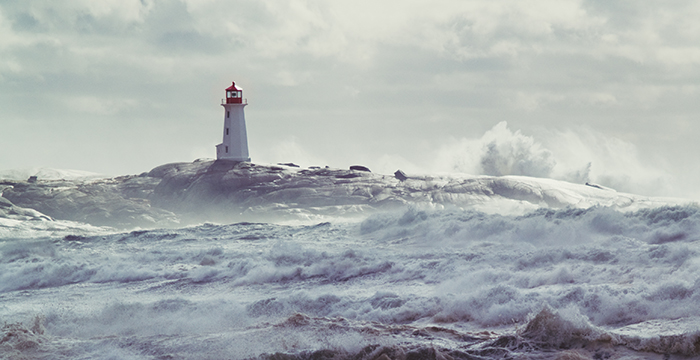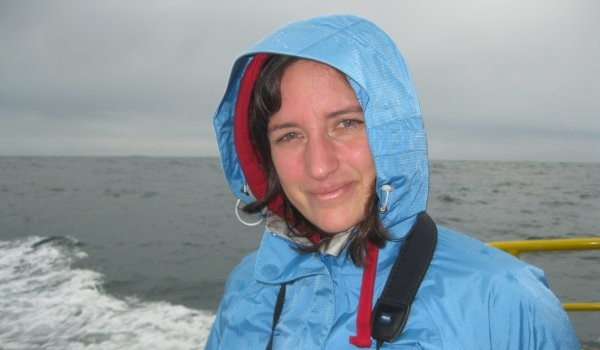Fieldnotes: The Arctic’s melting, the seas are rising. What does this mean for Canada?
How WWF helped save The Last Ice Area

Tuvaijuittuq, a High Arctic area almost the size of Germany, means “the place where the ice never melts” in Inuktitut. The federal government recently declared the 322,000 sq. km region an interim Marine Protected Area while cementing protected status for Tallurutiup Imanga, a nearby 108,000 sq. km space. But the origin of these two areas, which make up a massive safe habitat for Arctic wildlife, began with a phrase as simple as it is staggering: The Last Ice Area.
Coined by WWF over a decade ago, long before the public understood global warming’s existential threat to the cryosphere (our snow- and ice-covered land and waters), it brought clarity to the Arctic’s climate crisis. In the summer of 2007, sea ice extent reached a record low — a trend that’s continued ever since — prompting WWF’s Global Arctic Program to discuss the threat this posed to polar bear habitat in Washington, DC.
“It basically came down to the fact that the ice habitat is disappearing, and polar bears cannot thrive without ice,” says Paul Crowley, WWF-Canada’s VP, Arctic. So, WWF commissioned a scientist from McGill University whose climate models projected that the area above Nunavut and Greenland would have the longest persisting sea ice as the world warms. That meant this polar region could become a final refuge for ice-dependent species as well as the Inuit communities that they sustain.
The Last Ice Area already had a name — local Inuit elders called it “Similijuaq,” meaning “place of the big ice” — but WWF’s moniker reflected its stark new reality. And with millions in funding from The Coca-Cola Company and other partners, this long-term project began in earnest. During the “Sailing to Siku” expedition in 2012, WWF researchers visited Inuit communities along the ice edge (beginning in Greenland and crossing over to Canada) to seek guidance and expertise on future conservation. Combining Indigenous knowledge with cutting-edge climate science, WWF started advocating for a network of Arctic marine protected areas within the Last Ice Area, and more oversight of the rest of the region.
Last year, Crowley took a partial leave of absence from WWF to help the Qikiqtani Inuit Association negotiate a deal. The result protects a significant portion of the Last Ice Area and its Arctic species from shipping and oil and gas development, while economically benefitting local communities.
Now all of us must do our part to reduce emissions before it becomes the “lost” ice area.
New UN report shows time running out for climate action
Released a few days before the historic Global Climate Strike, the IPCC Special Report on the Ocean and Cryosphere in a Changing Climate was another dire warning from the world’s scientists that we are reaching a tipping point. Our planet’s ice and snow are melting, and the seas are rising — but it also shows we can still make a difference if we act now! If we continue with business as usual, here’s what we stand to lose:
Arctic: We haven’t lost this much sea ice in at least the past thousand years, and thick multi-year ice has declined by 90 per cent since the early 1980s. The report warns summer sea ice will be lost completely in a two-degree world — we’re currently on track to hit 3°C — threatening Arctic wildlife and communities. Melting permafrost will also destroy most infrastructure and release previously trapped methane.
Ocean: Polar glacier and ice sheet melt is now the largest contributor to sea-level rise, which could affect one billion people by 2050. Between 20-90 per cent of coastal wetlands will be lost, annual flood damage will increase by two to three times, and extreme storms will ramp up if we don’t meet our targets.
High Mountains: Retreating glaciers, reduced snow cover and melting permafrost are contributing to sea-level rise while threatening species with extinction and harming the river systems we rely on for hydropower, agriculture and drinking water.
Nothing in human history comes close to the kinds and rates of change we expect to face from this climate crisis. But we can still minimize risk and maximize resiliency if we act now to employ nature-based solutions and decarbonize our economy.
“Nature can help us mitigate and adapt to climate change,” says Megan Leslie, WWF-Canada president and CEO. “But only people can take the bold and immediate actions needed to save our planet.”
Q&A: Why protecting our oceans protects the world

As the ice melts, the seas rise. So, we spoke to Sigrid Kuehnemund, our VP of Ocean Conservation, about how climate change is affecting our oceans and what we can do about it.
How does a changing climate affect the ocean?
Oceans provide us with half the oxygen we breathe and are home to millions of Earth’s plants and animals. They also absorb and store much of the planet’s carbon. But increasing acidification, rising temperatures and melting polar ice are causing damage to coastal communities, including Indigenous communities, who are at the forefront of our changing climate. Melting sea ice also means a loss of culture and identity for Inuit communities.
How can protecting our oceans help us deal with climate change?
The best defence is ensuring our ocean and coastal ecosystems are resilient to the impacts of climate change. WWF-Canada has advocated for networks of effective marine protected areas and worked with the federal government on adopting minimum standards for Marine Protected Areas. These restrict harmful industrial activities like bottom trawling, sea-bed mining, ocean dumping, and oil and gas extraction and development.
How do nature-based solutions come into play?
We must make room for nature to do the job that it has been designed to do. Protecting our oceans is important for carbon capture and storage, as are other nature-based solutions like the restoration of critical habitats such as salt-water marshes, seagrasses and coastlines. There are three parts to employing nature-based solutions: protection, restoration and managing human activities.
Meet a… Scientist
Elizabeth Hendriks, Vice President Freshwater, WWF-Canada
Elizabeth has spent the past eight years at WWF-Canada. As VP of freshwater, she led the 2017 release of the Watershed Reports, the first national assessment of the health and stressors of Canada’s freshwater. Her work involves reversing the decline of freshwater ecosystems across the country with the intersection of technology, policy and community building.“Climate is water. Our wildlife and communities will feel climate change through water events such as flooding, droughts and ice loss. Addressing the health of Canada’s freshwater will allow us to mitigate and adapt to the impacts of climate change.”


